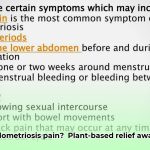Want to grow your own vitamin-C-rich acerola cherries? This guide simplifies the process, covering everything from selecting the right tree to harvesting your bounty.
Acerola Cherry Tree: Your Guide to Vitamin-Rich Rewards
Growing acerola cherries is a rewarding adventure! While challenges exist, the sweet taste of success and healthy fruit make it worthwhile. Let’s get started. What are some things you should know before starting to manage your trees?
Understanding the Acerola Family: Malpighia Species and Fruit Varieties
First, “acerola cherry” encompasses several Malpighia species (including Malpighia emarginata and Malpighia glabra), each with unique fruit characteristics and climate preferences. Choosing the right type for your area is key to maximizing fruit production. Malpighia emarginata is widely cultivated for its high vitamin C content. Consult your local nursery or agricultural extension office for climate-specific recommendations and information on disease resistance in different cultivars.
Propagation: Seeds vs. Cuttings – A Detailed Comparison of Techniques
Growing acerola cherries from seed is possible, although germination rates can be inconsistent, often below 30%. This method also introduces variability in the offspring, meaning the fruit quality might not match the parent tree. To improve your chances with seeds, follow these steps:
Step 1: Selection: Use fresh seeds extracted from fully ripe, healthy cherries. Avoid seeds that appear shriveled or discolored.
Step 2: Pulp Removal: Thoroughly clean the seeds to remove any remaining pulp, as this can inhibit germination.
Step 3: Scarification: Gently scarify the seed coat by lightly rubbing it with sandpaper to improve water absorption.
Step 4: Soaking: Soak seeds in lukewarm water for 24-48 hours, changing the water every 12 hours.
Step 5: Sowing: Sow seeds ¼ to ½ inch deep in a well-draining seed-starting mix composed of equal parts peat moss, perlite, and vermiculite.
Step 6: Germination Conditions: Keep the soil consistently moist but not waterlogged. Maintain a warm and humid environment with temperatures between 75-85°F (24-29°C). A humidity dome can help retain moisture.
Step 7: Patience: Germination can take anywhere from 3 weeks to several months. Be patient and avoid disturbing the seeds.
For a more reliable and faster approach, use softwood or semi-hardwood cuttings, which root faster and produce genetically identical, fruit-bearing trees more consistently. This ensures that the new tree will have the same desirable traits as the parent.
- Source Material: Select healthy, disease-free parent trees known for high-quality fruit production.
- Take Cuttings: Snip 4-6 inch cuttings from new growth in late spring or early summer. Use sterilized pruning shears to prevent disease transmission.
- Leaf Removal: Remove the leaves from the lower half of each cutting to reduce moisture loss.
- Rooting Hormone: Dip the cut ends in a rooting hormone containing IBA (Indole-3-butyric acid) to stimulate root development.
- Planting: Plant cuttings in a well-draining propagating mix, such as perlite or vermiculite.
- Humidity: Maintain high humidity levels by using a misting system or covering the cuttings with a plastic dome.
- Environment: Place the cuttings in a warm location with indirect sunlight.
- Rooting Time: Rooting typically occurs within 4-8 weeks. Gently check for root development by tugging on the cuttings.
- Transplanting: Once the cuttings have developed a strong root system, transplant them into individual pots filled with a well-draining potting mix.
Site Selection and Soil Preparation: Finding the Perfect Environment
Acerola trees thrive in full sun, requiring at least 6-8 hours of direct sunlight daily to maximize fruit production. Select a location that is sheltered from strong winds, which can damage the shallow root system and developing fruit. The ideal soil is well-drained with a slightly acidic to neutral pH (6.0-7.0). Conduct a soil test to determine the pH and nutrient levels. Amend the soil as needed with organic matter, such as compost or well-rotted manure, to improve drainage and fertility. Avoid planting in heavy clay soils or areas prone to waterlogging.
Planting and Care: Nurturing Your Acerola Cherry Seedling
Plant your acerola tree in early spring or late fall when the weather is mild. Dig a hole twice as wide as the root ball and just as deep. Gently remove the tree from its container, loosening any circling roots. Position the tree in the hole, ensuring the top of the root ball is level with the surrounding soil. Backfill the hole with amended soil, gently tamping it down to remove air pockets. Water thoroughly after planting to settle the soil and hydrate the roots. Apply a layer of organic mulch around the base of the tree to help retain moisture, suppress weeds, and regulate soil temperature. Fertilize lightly in spring and fall with a balanced fertilizer formulated for fruit trees, following the manufacturer’s instructions. Prune dead, damaged, or diseased branches to encourage air circulation, sunlight penetration, and fruit production.
Pest and Disease Management: Ensuring a Healthy Plant
Implement an integrated pest management (IPM) strategy to minimize the use of chemical pesticides. Regularly inspect your trees for signs of pests and diseases. Common pests include aphids, scale insects, whiteflies, and spider mites. Natural predators, such as ladybugs and lacewings, can help control pest populations. For minor infestations, hand-pick pests or use insecticidal soap or neem oil. Crop rotation can reduce pest pressure in orchards. Remove fallen leaves and debris from around the trees to minimize fungal diseases like leaf spot, anthracnose, and root rot. Ensure good air circulation by pruning dense foliage. Apply copper-based fungicides preventatively to control fungal diseases, following label instructions carefully.
Harvesting and Using Your Bounty: From Plant to Plate
Harvest fruits when they are fully ripe and bright red, typically 25-35 days after flowering. The cherries should be firm to the touch and easily detach from the stem. Harvest frequently, as the fruits ripen unevenly. Handle the delicate fruit carefully to avoid bruising. Enjoy them fresh, juice them, make jams, jellies, or preserves, or dry them for smoothies and snacks. Acerola cherries are highly perishable, so process or refrigerate them as soon as possible after harvesting.
The Business of Acerola: Turn Your Passion Into Profit
Acerola cultivation’s profitability depends on factors such as yields, processing costs, market demand, and scale of operation. Small-scale growers can target local farmers’ markets, specialty food stores, and restaurants. Larger operations might explore processing acerola into juice, powder, or supplements for distribution to national and international markets. Conducting thorough market research is crucial to identify potential customers and assess the competitive landscape before investing in acerola cultivation. Consider value-added products and direct-to-consumer sales to increase profitability. Explore organic certification to appeal to health-conscious consumers.
Weighing It All: Challenges and Rewards
| Challenge | Mitigation Strategy |
|---|---|
| Low seed germination rates | Use cuttings for propagation to ensure genetic consistency and faster growth. |
| Wind damage | Choose a sheltered location or install windbreaks to protect trees from strong winds. |
| Pests and diseases | Implement an integrated pest management (IPM) program with regular monitoring, biological controls, and organic pesticides. |
| Market variability and pricing | Diversify products, explore value-added options, secure market access through contracts, and develop a strong brand. |
| Short shelf life of fruit | Process the fruit quickly after harvest into juice, powder, jams, or preserves to extend its shelf life and marketability. |
| Frost sensitivity | Plant in frost-free areas or protect trees with covers during cold snaps. |
Growing acerola cherry trees presents challenges, but the rewards are well worth the effort. With careful planning, consistent care, and patience, you can enjoy the health and economic benefits of this amazing fruit. Ongoing research continues to refine best practices, offering exciting potential for future growers.
How to Improve Barbados Cherry Seed Germination Rates
Getting acerola seeds to sprout isn’t always easy, with unpredictable germination rates. Several factors influence success: seed viability, germination conditions, and the source of your seeds. But don’t despair, this can be boosted!
Optimizing Germination Conditions
- Seed Selection: Start with fresh, high-quality seeds from ripe, healthy cherries. Locally sourced seeds often perform better, as they are adapted to the local climate.
- Pulp Removal: Remove all traces of pulp from the seeds, as the pulp contains germination inhibitors.
- Scarification (Mechanical): Gently nick the seed coat with a knife or rub it lightly with sandpaper to improve water absorption. Be careful not to damage the embryo.
- Pre-Sowing Treatment (Optional): Soak seeds in warm water for 24-48 hours before planting to soften the seed coat and leach out any remaining inhibitors. Change the water every 12 hours.
- Sowing Medium: Use a well-draining, sterile seed-starting mix. Avoid heavy clay soils, which can lead to
- Plant Based Diet Breast Cancer: Research-Based Benefits - December 16, 2025
- Plant-Based Diet Ulcerative Colitis Remission: Proven Benefits - December 15, 2025
- Plant-Based Diet and Fibroids: Reduce Symptoms Now - December 13, 2025










